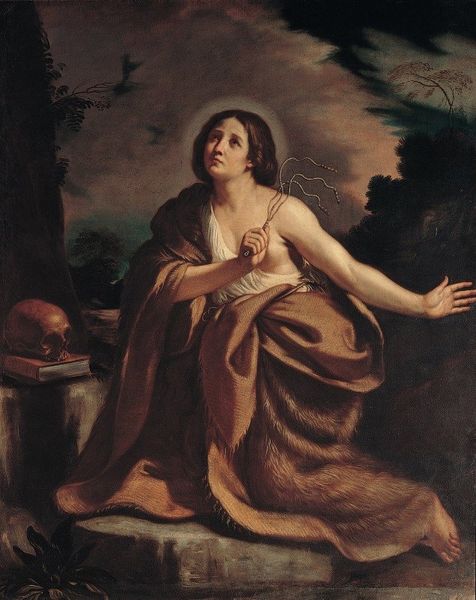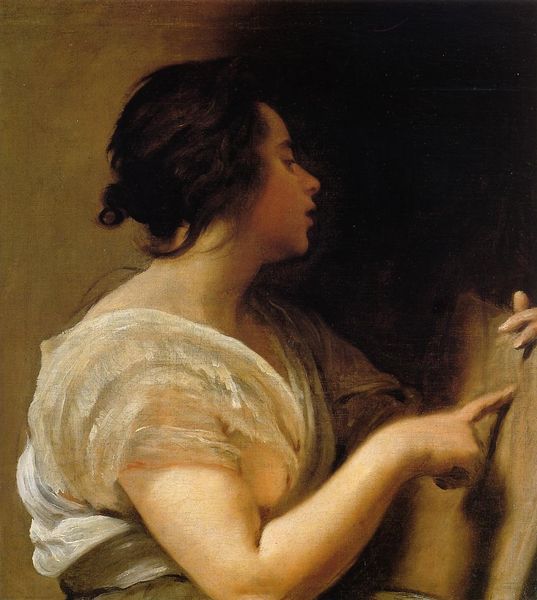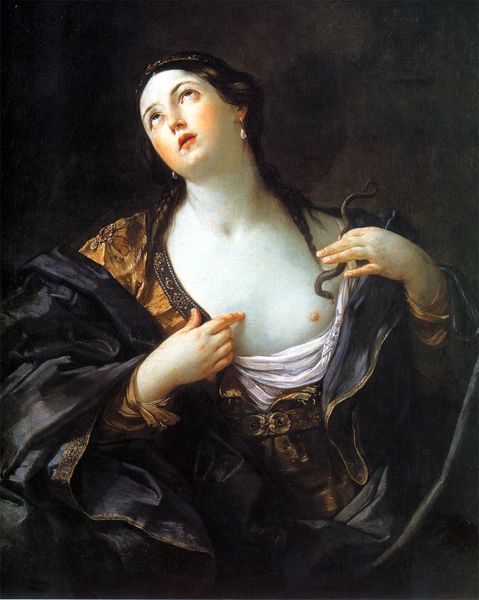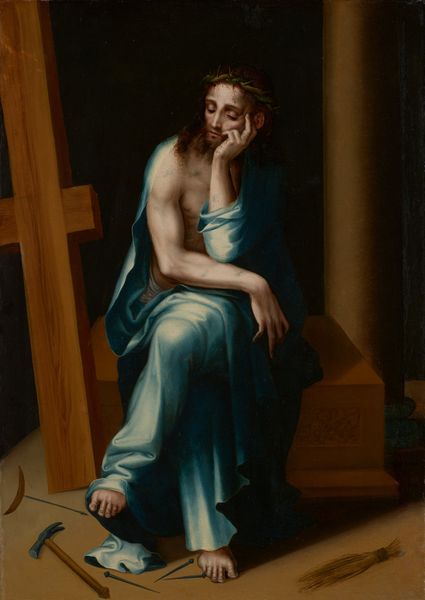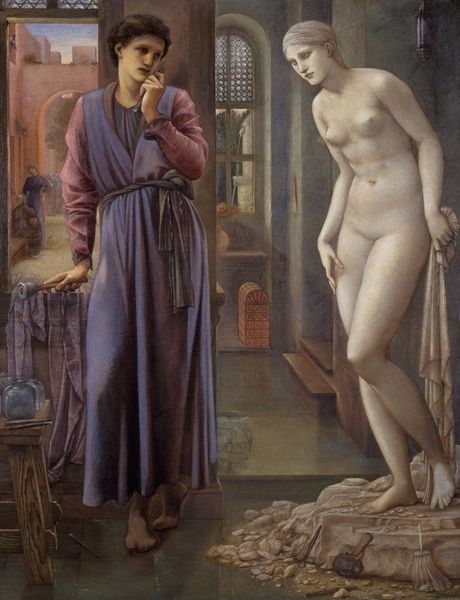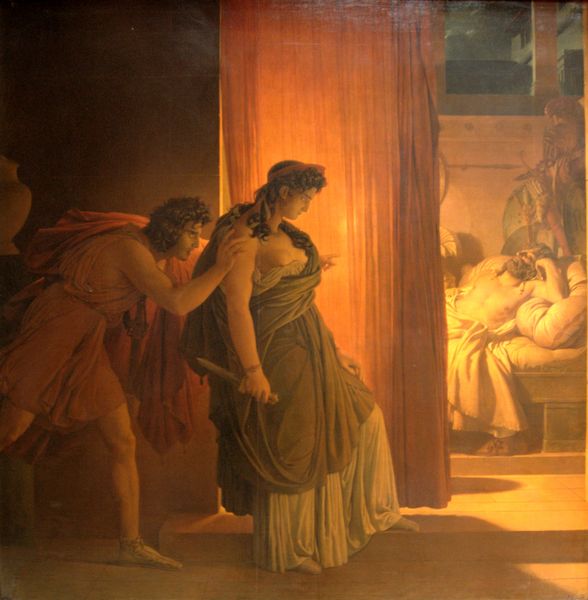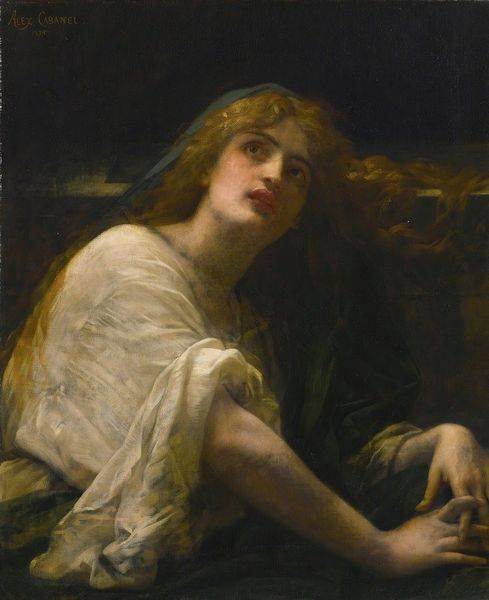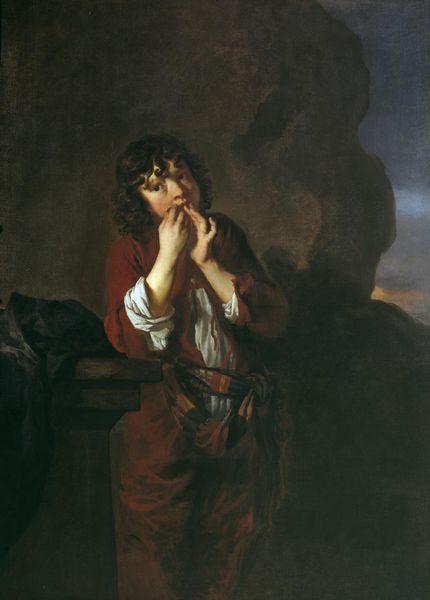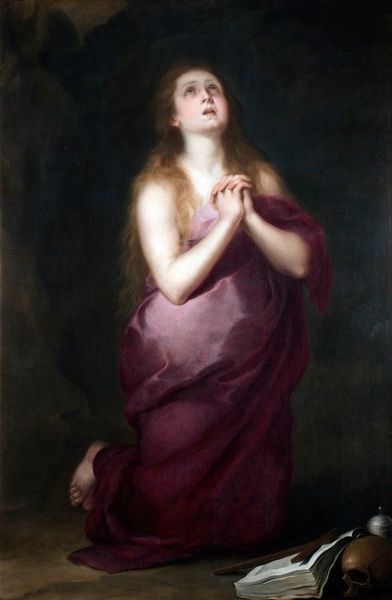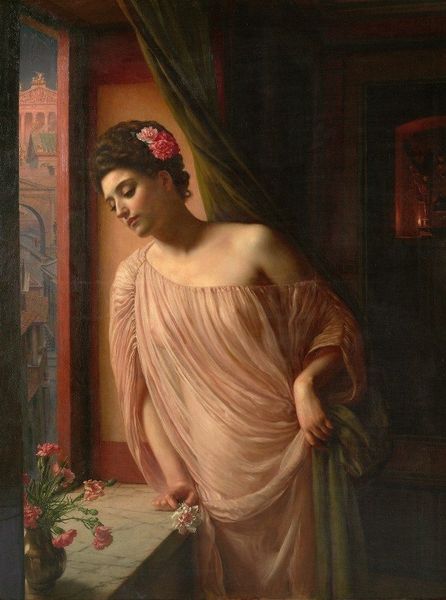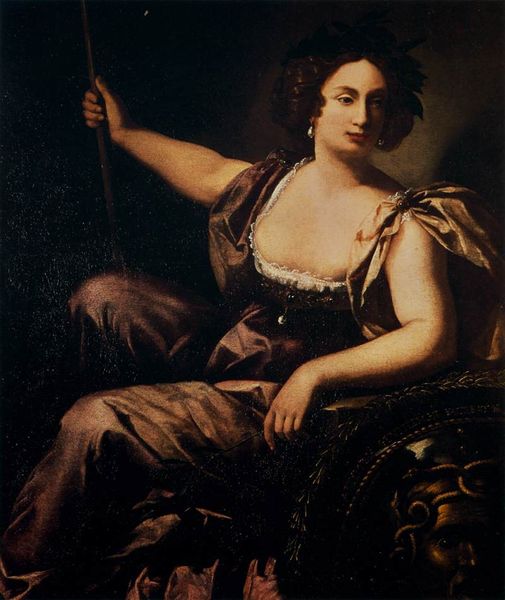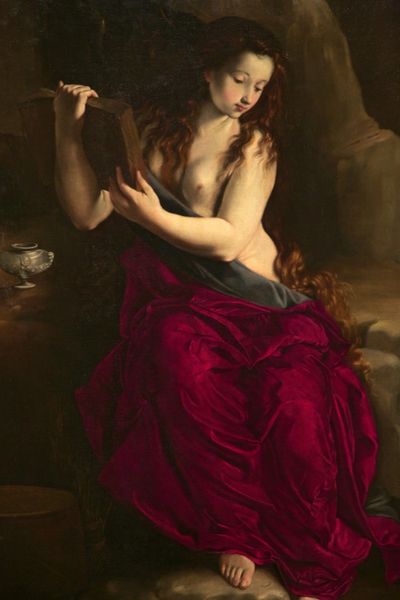
painting, oil-paint
#
portrait
#
allegory
#
baroque
#
painting
#
oil-paint
#
momento-mori
#
chiaroscuro
#
history-painting
Copyright: Public domain
Editor: This is Gerard van Honthorst's "Penitent Mary Magdalene" from 1625, oil on canvas. It has such a dramatic, almost theatrical quality. The strong contrast between light and shadow really grabs you. How do you interpret this work, especially in its historical context? Curator: Honthorst, nicknamed "Gherardo delle Notti" or Gerard of the nights in Italy, masterfully uses chiaroscuro here. The intense light not only directs our gaze but was itself a kind of visual rhetoric in the Baroque period. This dramatic illumination was closely associated with Caravaggio and his followers. But think about *why* this style gained prominence. Editor: Was it just a trend, or did it reflect something deeper? Curator: Exactly. The Counter-Reformation was in full swing. The Catholic Church was actively trying to win back followers lost to Protestantism. The drama, emotion, and even the realism of Baroque art like this aimed to inspire religious devotion. What effect do you think painting an emotional moment of devotion and penance could have had in its time? Editor: It definitely makes the religious experience feel more personal and relatable. And showing Mary Magdalene with these memento mori symbols—the skull, the crucifix—brings a real sense of urgency to her transformation. Curator: Precisely. These visual elements aimed to provoke an emotional response in the viewer, encouraging introspection and perhaps even conversion. The painting becomes a powerful tool for the church, showcasing the path to repentance and divine grace. Editor: That makes the political dimension of Baroque art much clearer. I hadn't thought about the emotional aspect as a deliberate strategy before. Curator: Art wasn’t made in a vacuum, especially back then! Understanding that helps us see past the aesthetic beauty to appreciate the social and political functions at play. Editor: That’s a whole new way to see these works. Thanks, it’s been fascinating!
Comments
No comments
Be the first to comment and join the conversation on the ultimate creative platform.
